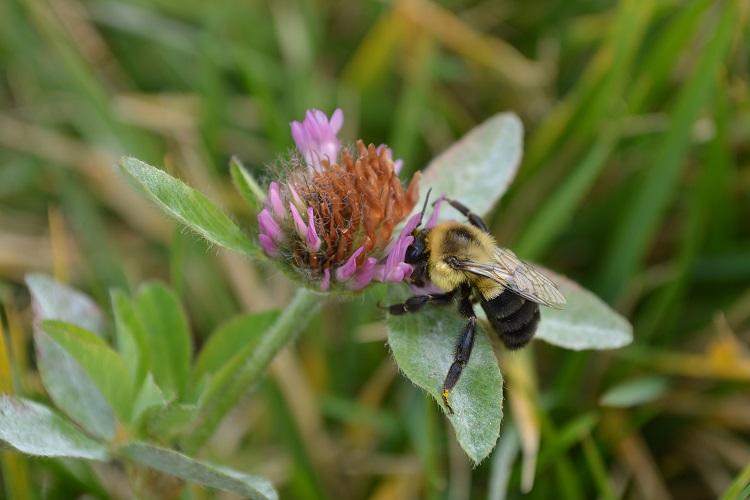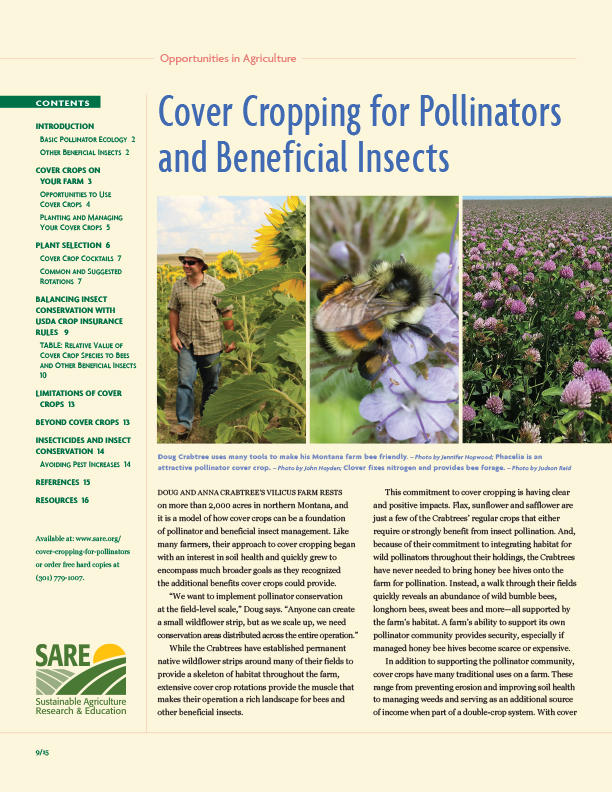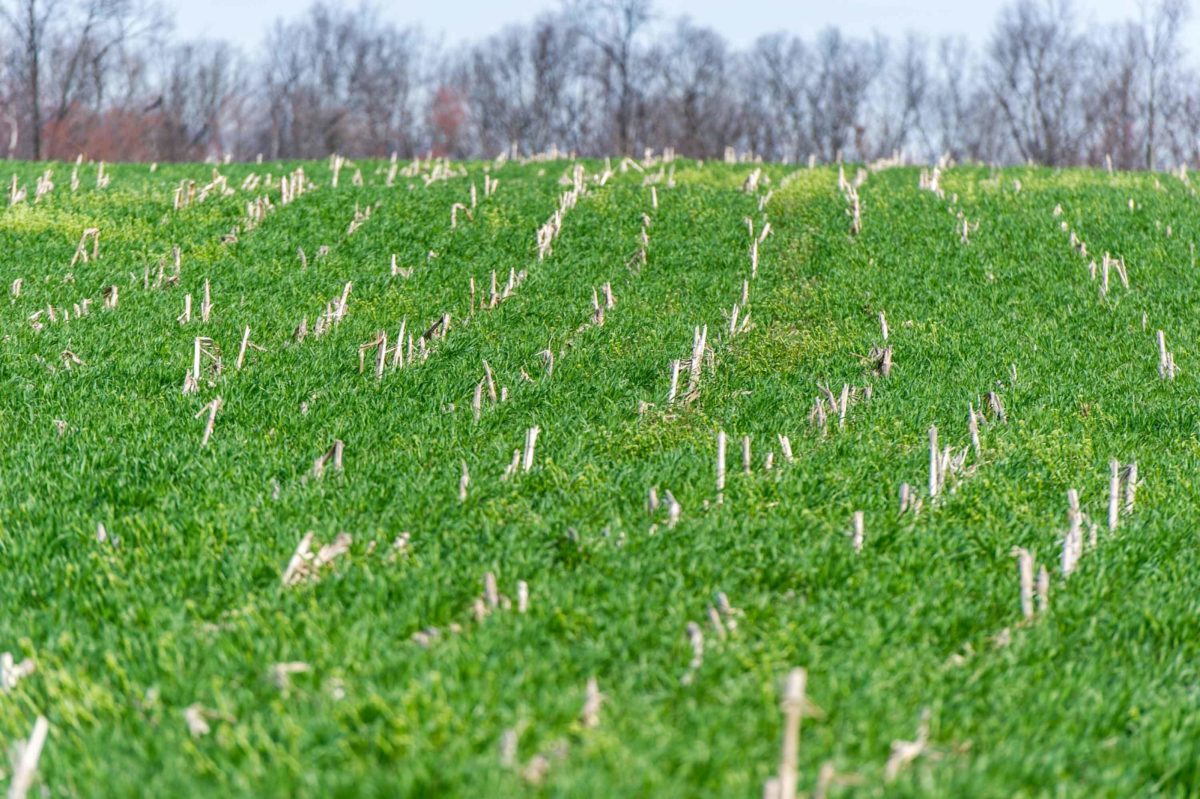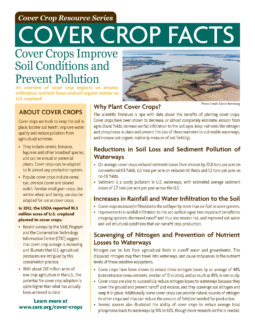An overview of how cover crops and management practices can benefit pollinators.

Download this fact sheet (PDF). This fact sheet is part of the Ecosystem Services from Cover Crops fact sheet series.
Pollinators: Who They Are and What They Need
Honeybees are an iconic pollinator on most farms, but they are not alone. There are actually hundreds of species of native bees and thousands of species of butterflies, flies, wasps and beetles that also act as pollinators. In many cases, native pollinators are sufficient for pollinating crops.1 However, cash crops themselves are not always able to fully support pollinators. In these instances, cover crops can help provide crucial habitat for honeybees and many other pollinators.
- The most important resources for pollinators are the pollen and nectar provided by flowering plants. Cover crops that flower can help pollinators meet their food requirements.
- Pollinators need more than just pollen and nectar. Most native bee species nest in the soil or in dead vegetation, which cover crops can provide even if they do not flower.
Selecting and Managing Cover Crops for Pollinators
Cover crops are managed with multiple goals in mind. These are some management practices to keep in mind when trying to manage for beneficial insects.
- Aim to establish a diverse mix of cover crops that can support more diverse communities of pollinators than a single-species cover crop. Use a cover crop guide to help you find plants with bloom times that are compatible with your production system and attractive to pollinators.
- Summer cover crops like buckwheat or sunflowers are especially beneficial for pollinators because of their longer flowering period compared to fall-planted cover crops.
- Allowing cover crops to flower through peak bloom is vital for pollinators. Ideally, a cover crop mix will include species that flower at different times to ensure that pollinators have a food resource throughout the season.
- Avoid using insecticides on or where it could drift into cover crops. If terminating cover crops with an herbicide, take care to avoid drift into neighboring vegetation that may support pollinators.

Cover Cropping for Pollinators and Beneficial Insects
This 16-page bulletin will help you use cover crops to encourage populations of pollinators and beneficial insects on your farm while you address your other resource concerns.
Download File (840.79 kB) | Online Text Version
Free print copies: Visit Cover Cropping for Pollinators and Beneficial Insects.
Overall Pollinator Management
Cover crops benefit pollinators most when combined with other management practices on the farm.
- Minimizing tillage preserves nesting habitats for ground nesting native bees and overwintering cover for other pollinators and beneficial insects.
- Perennial vegetation that includes flowering plants gives pollinators an undisturbed refuge for food and nesting habitat. Windbreaks, hedgerows, pollinator strips and riparian buffers can all function as pollinator habitat.
- Intercropping with flowering plants and living mulches like white clover provide constant pollen and nectar sources throughout the entire growing season.
- Systemic insecticides like neonicotinoids, often applied to commodity crop seeds, are taken up into plant tissues and are sometimes found in nectar and pollen ingested by pollinators. Insecticide applied to seeds can persist in the soil and be taken up by cover crops. It can also drift, as dust or in water, out of the fields and into other vegetation like pollinator strips. Even if pollinators are not killed from ingesting the nectar or pollen, they may suffer sub-lethal effects, such as an impaired ability to move and pollinate. Non-treated seed can be requested from seed dealers as part of an overall pollinator-friendly crop management strategy.
About Cover Crops

Cover crops are tools to keep the soil in place, bolster soil health, improve water quality and reduce pollution from gricultural activities.
- They include cereals, brassicas, legumes and other broadleaf species, and can be annual or perennial plants. Cover crops can be adapted to fit almost any production system.
- Popular cover crops include cereal rye, crimson clover and oilseed radish. Familiar small grain crops, like winter wheat and barley, can also be adapted for use as cover crops.
1 Winfree, R., N.M. Williams, H. Gaines, J.S. Ascher and C. Kremen. Wild bee pollinators provide the majority of crop visitation across land-use gradients in New Jersey and Pennsylvania, USA. Journal of Applied Ecology. 45, 793–802 (2008).
